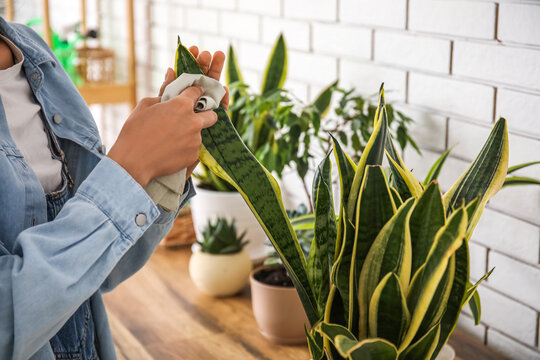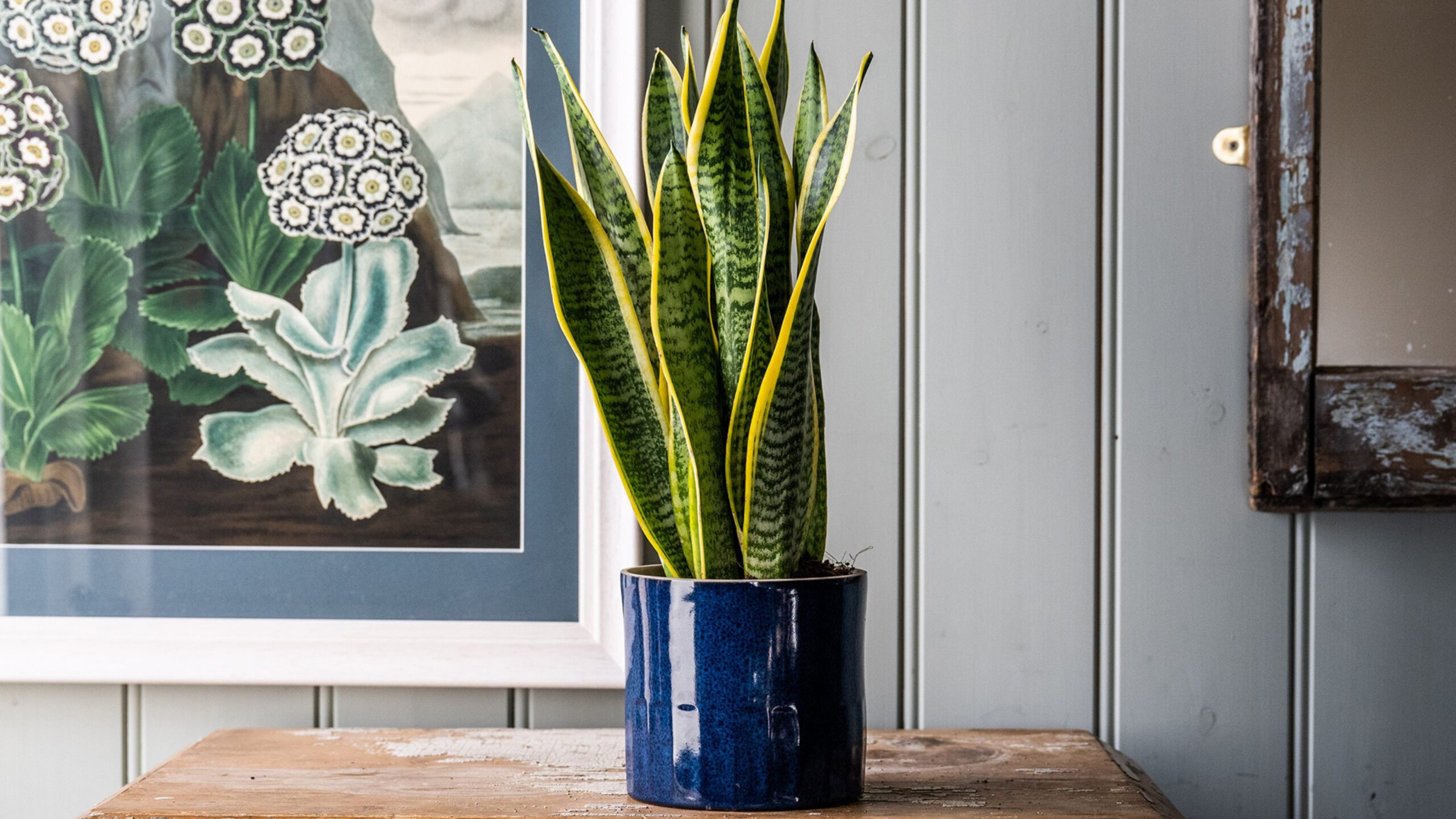Snake plants (Sansevieria trifasciata), also known as mother-in-law’s tongue, are some of the easiest and most forgiving houseplants you can own. With their striking upright leaves, bold green patterns, and impressive tolerance for neglect, snake plants have become a staple in homes, offices, and apartments alike.
Whether you’re a seasoned plant parent or a total beginner, this comprehensive guide will teach you how to care for a snake plant and keep it healthy, so it thrives for years to come.

Why Choose a Snake Plant?
Before diving into care details, let’s appreciate why snake plants are so popular:
- Low-maintenance and hardy
- Air-purifying qualities (removes toxins like formaldehyde and benzene)
- Thrives in low to bright indirect light
- Minimal watering requirements
- Aesthetic appeal with upright, sword-like leaves and variegated patterns
In short — it’s a plant that looks good, cleans your air, and won’t mind if you forget about it now and then.
Ideal Growing Conditions for Snake Plants
To keep your snake plant healthy, it’s important to provide the right environment.
Light Requirements
Snake plants are incredibly adaptable when it comes to lighting:
- Ideal: Bright, indirect light
- Tolerates: Low light and shaded corners
- Avoid: Harsh direct sunlight, which can scorch the leaves
Pro tip: If you notice fading or drooping leaves, it may need a little more light.
Temperature and Humidity
Snake plants prefer:
- Temperature: Between 60°F and 85°F (16°C – 29°C)
- Humidity: Average indoor humidity; they tolerate dry air well
Avoid placing your snake plant near drafty windows, air conditioning vents, or heaters during extreme temperature changes.
Soil Type
Well-draining soil is crucial to prevent root rot:
- Use a cactus or succulent soil mix
- Or, create your own mix: 2 parts potting soil, 1 part perlite, and 1 part sand
Good drainage is the number one rule for snake plants.
How Often to Water a Snake Plant
One of the most common mistakes people make is overwatering snake plants. They’re drought-tolerant and prefer their soil to dry out between waterings.
Watering Guidelines:
- Spring and summer (growing season): Water every 2–3 weeks
- Fall and winter (dormant season): Water every 4–6 weeks
- Check soil moisture: Only water when the top 1–2 inches of soil is dry
Tip: It’s better to underwater than overwater a snake plant.
Signs of overwatering:
- Yellow, mushy leaves
- Foul-smelling soil
- Root rot
Signs of underwatering:
- Wrinkled, crispy leaf edges

Fertilizing Your Snake Plant
While snake plants don’t need frequent feeding, a little nourishment encourages strong growth and vibrant leaves.
- Use a balanced houseplant fertilizer (10-10-10 or 20-20-20)
- Frequency: Once every 4–6 weeks during spring and summer
- Avoid fertilizing in fall and winter when the plant is dormant.
Pro tip: Always dilute fertilizer to half the recommended strength.
Repotting a Snake Plant
Snake plants grow slowly but can eventually become root-bound. You’ll know it’s time to repot when:
- Roots poke out from the drainage holes
- The pot bulges or cracks
- Growth slows significantly
When to Repot:
Every 2–3 years, preferably in spring
How to Repot:
- Gently remove the plant from its pot
- Shake off excess soil and inspect roots (trim any rotten sections)
- Place in a slightly larger pot with fresh, well-draining soil
- Water lightly and place in indirect light
Tip: Snake plants prefer snug pots, so only size up by 1–2 inches.

Pruning and Cleaning
While snake plants are generally low-maintenance, occasional pruning keeps them tidy and promotes new growth.
- Remove yellowed or damaged leaves by cutting at the soil line with sterile scissors
- Wipe leaves regularly with a damp cloth to remove dust and enhance photosynthesis
Pro tip: Avoid using leaf shine products, which can clog the leaf pores.
Common Pests and Problems
Though hardy, snake plants can still face occasional issues.
Pests to Watch For:
- Mealybugs: White, cotton-like masses on leaves
- Spider mites: Fine webbing and tiny dots on leaves
- Scale insects: Small, brown shell-like bumps
Solution: Wipe leaves with insecticidal soap or neem oil.
Diseases:
- Root rot: Caused by overwatering. Always let the soil dry before watering again.
- Leaf spot: Remove affected leaves and ensure good air circulation.
Propagating Snake Plants
Propagation is easy and a great way to multiply your collection or share with friends.
Methods:
- Leaf cuttings in water:
- Cut a healthy leaf into 4-inch sections
- Place the bottom end in water
- Change water weekly until roots form
- Transfer to soil
- Leaf cuttings in soil:
- Cut and plant leaf segments upright in moist soil
- Keep in indirect light
- Division:
- Remove the plant from its pot
- Gently separate root clumps (rhizomes)
- Replant sections in individual pots
Tip: Propagation is easiest in spring and summer.

Benefits of Snake Plants
Beyond their ease of care, snake plants offer several health and home benefits:
- Air Purification: Remove toxins like benzene, formaldehyde, and nitrogen oxide
- Oxygen Production: Unique for releasing oxygen at night — perfect for bedrooms
- Aesthetic Value: Their bold, architectural foliage complements modern and minimalist décor
- Pet Safety: Caution — while non-fatal, snake plants can be mildly toxic to pets if ingested
Fun Snake Plant Varieties to Try
If you love the classic Sansevieria trifasciata, consider these stunning variations:
- Sansevieria ‘Laurentii’ – green leaves with bright yellow edges
- Sansevieria ‘Moonshine’ – silvery-green, almost ghostly leaves
- Sansevieria cylindrica – round, spear-shaped leaves
- Sansevieria ‘Black Gold’ – dark green leaves edged with gold
- Sansevieria masoniana (Whale Fin) – wide, paddle-shaped leaves
Each variety offers unique textures and colors, all while being just as hardy.
Final Thoughts
If you’re looking for a plant that’s beautiful, adaptable, and virtually indestructible, the snake plant is an unbeatable choice. With just occasional watering, indirect light, and well-draining soil, this plant will reward you with fresh, clean air and architectural charm year-round.
Remember — less is more when it comes to caring for a snake plant. Over-attention is often what harms it, so embrace its laid-back, easy-going nature and enjoy its beauty with minimal fuss.





Leave A Comment